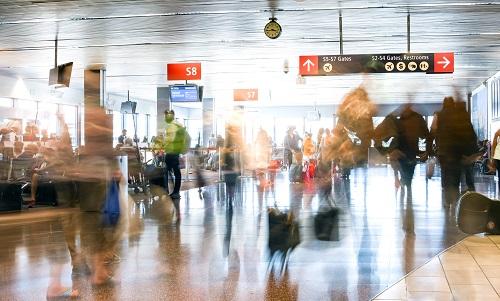

As the U.S. struggles to navigate the new travel landscape, it’s essential to know what assurance the airlines are requiring as well as how travelers can meet those requirements. And after all, having athletes caught flat-footed at the airport is something to be avoided at all costs.
The CDC’s website makes it very clear: State, local, and territorial governments may have varying travel restrictions in place, including testing requirements, stay-at-home orders, and quarantine requirements upon arrival.
Those planning to travel – as well as those putting on events in any given area – should make sure that up-to-date information and travel guidance is available on the event website. It is possible to check the state and local health department at the departure destination, any stops along the route, and of course, the tournament or event destination.
And, the CDC notes, “Prepare to be flexible during your trip as restrictions and policies may change during your travel.”
Easy for the CDC to say; they’re not trying to make the start time of a tournament. (Which means it only becomes more essential for athletes – and well as their parents) to adhere to regulations).
For those planning to fly: Different airlines have different rules. Those planning to fly should check their individual airline (not just when booking a ticket, but in the time leading up to flying) to see if it requires specific health information, testing, or other documents. Some may actually require verification of a negative test (in a current period) while others may ask COVID screening questions. The landscape changes on an almost daily basis.
Local policies at your destination may require you to be tested for COVID-19. If you test positive on arrival, you may be required to isolate for a period of time.
According to The Points Guy, as of December 9, American Airlines began offering test kits to travelers headed to the following domestic destinations with testing requirements.
- Washington, DC
- Connecticut
- Chicago
- Maryland
- Massachusetts
- New Mexico
- New York state
- Puerto Rico
- Rhode Island
- U.S. Virgin Islands
New destinations continue to be added to this list, so travelers headed out are instructed by airlines (not just those flying on American but on other airlines as well) to check any applicable requirements and to order their testing kits five or more days before departure.
For example, Visit Pittsburgh recently noted that according to the Allegheny County Airport Authority, Pittsburgh International Airport has also begun offering optional COVID-19 testing for arriving and departing passengers.
American’s official COVID-19 test is available through its partner, LetsGetChecked, giving select passengers access to a $129 at-home PCR test. The test may or may not be covered by medical insurance, so flyers are urged to check in advance inf this is a concern.
Initially, testing was limited to passengers traveling to a handful of destinations, including Belize, Grenada and St. Lucia, plus select Hawaii flights. Now, AA is gearing up to offer LetsGetChecked’s services to a far larger group of travelers.
Make no mistake, though. This is far from the only test available. Many services, pharmacies and other groups offer testing – and of course, the Internet contains links to multiple testing kits, methods and advice. Google up “COVID testing for travel” and you’re presented with (no lie) about 4,980,000,000 results. Some are links to qualified news stories, some are links to sites that sell test kits – and some are simply specious information. Bottom line: check with your airline or other carrier (including vendors of rail transit, bus and water travel) to find out what the regulations are. Ask, also, if specific tests (other than those from the recommended partner) can be applied to your chosen airline.
And, according to the Washington Post, all tests (or testing sites) may not be created equal, and may not be able to deliver results in a specified time frame. The Post interviewed Lin Chen, a doctor and director of the Travel Medicine Center at Mount Auburn Hospital in Cambridge, Massachusetts, to get advice for travelers. Chen noted that potential travelers should check in with their primary care provider, who may know the best options for testing in their area. Other options include looking at city and state health department websites for testing resources.
The article also notes, “While some people may have success walking into testing sites without an appointment, Chen advises against waiting until the last minute to arrange your test. Appointments in some areas may be limited, and because of testing supply and manpower shortages, Chen says testing sites may test only high-priority, at-risk people and turn away travelers. If you can’t find an in-person testing site, you can order one to be delivered to your house. One such option is Pixel, an at-home nasal swab collection kit from LabCorp for individuals 18 years or older who meet criteria to warrant a test. The FDA-authorized RT-PCR kit arrives in about two days, and results are returned within a few days.”
In addition, there are various types of testing (the CDC talks about them here), and they may have varying degrees of acceptance by everyone from employers to airlines.
Of course, the next iteration, something that can ameliorate the need for a test, is the so-called vaccine passport. The link shown has excellent and robust information to what the health passport provides and what its goals are regarding public safety. However, as the vaccine is just beginning rollout in various states, this is something that will be an ongoing development.

